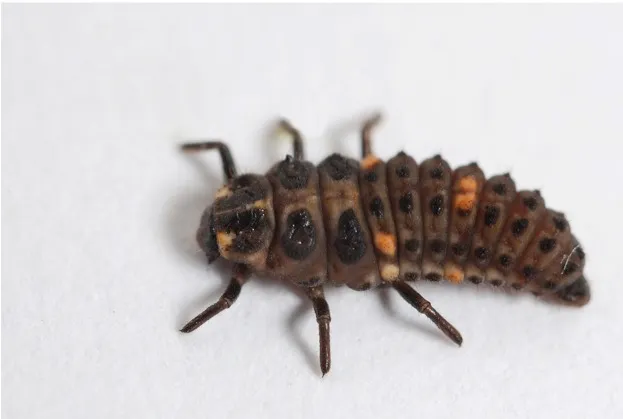Do two-spot ladybirds always have two spots?
This is one of our commonest ladybirds but they can be confusing when trying to identify it as two spots don’t always mean a two-spot ladybird! Their most common form is red with two black spots, but further north, black with four red spots can be common as the extra black helps retain warmth. In fact, two-spot ladybirds can have up to sixteen spots! And then to confuse matters further, the ten-spot and harlequin ladybird can also have two spots.
Do two-spot ladybirds hibernate?
In late autumn and winter, the temperature is falling rapidly and that’s when two-spot ladybirds can be seen inside your homes. They’re finding a warm spot to overwinter in, and are often found huddled together in groups. Unfortunately central heating in homes can mean that these ladybirds wake up too early so it’s best to put them in a garage outside where they can sleep out the rest of the winter.
Why are two-spot ladybirds declining?
The numbers of these particular ladybirds have fallen significantly in recent times and it is thought to be partially down to the invasion of the harlequin ladybird (Harmonia axyridis). Harlequins eat the eggs, larvae and pupae of the two-spot ladybird as well as the same food the two-spot ladybird feeds on, such as aphids.

Why are ladybirds so brightly coloured?
The bright colouration on ladybirds is there to warn predators that these beetles won’t make a decent meal. When attacked, ladybirds exude a bitter tasting alkaloid fluid from their leg joints in a defence mechanism known as reflex bleeding. The fluid also contains a distinctive smell of a chemical known as pyrazine which tells the attacker that this dinner is going to taste bad.
Are ladybirds pests or friends in the garden?
These carnivorous beetles are essential to a healthy garden. Not only are the adults fierce predators of aphids and help keep populations down, but the larvae are also aphid guzzlers and can eat eat up to 100 greenflies a day! Two-spots are often used as biological pest control throughout Europe, North America and Australia.
Can ladybirds have STDs?
It seems that while there are very few reports of sexually transmitted diseases in insects, the opposite can be said for ladybirds. From mites to fungi, ladybirds can often be full of parasites because of their high levels of ‘promiscuity’. One of the worries about the invasive harlequin ladybird is that it could potentially transmit a fatal STD fungi to our native species.
Buglife is the only organisation in Europe devoted to the conservation of all invertebrates. The trust is actively working to save Britain’s rarest little animals, everything from bees to beetles, worms to woodlice and jumping spiders to jellyfish.
Main image: © Riccardo Cuppini
